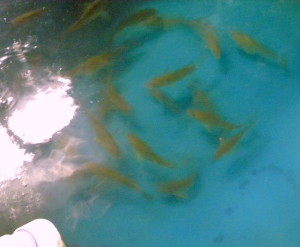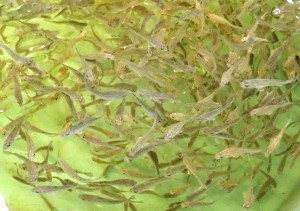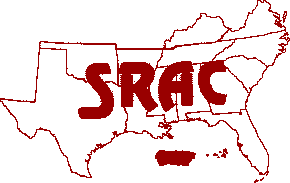

Need assistance with wildlife and fish management on your ranch, backyard, or pond? Simply call your local County Extension Agent.
Marine baitfish are popular, live-bait for several saltwater recreational angling species such as spotted seatrout, red drum, and snook. Researchers and culturists are interested in baitfish culture because marine bait species can have higher market value than many marine foodfish. The culture of marine baitfish, such as Atlantic croaker, pinfish, pigfish, and gulf killifish, as high-value live bait has great potential with some commercial production in Florida, Alabama, Louisiana, and Texas.
In a survey conducted by the Texas Parks and Wildlife Department in 1995 to 1996, the most often used baitfish types included mullet, Atlantic croaker, and killifish on bay-pass private-boat trips; Atlantic croaker and mullet on bay-pass party-boat trips; round scad and Atlantic cutlassfish on gulf private-boat trips; and herring and Atlantic cutlassfish on gulf party-boat trips. Live baitfish use emerged as a possible fisheries-management issue in the early 1990’s when juvenile Atlantic croaker were increasingly used as bait to catch spotted seatrout along portions of the Texas coast. Questions arose on possible impacts of this trend on populations of both spotted seatrout and Atlantic croaker. Atlantic croaker (59.2% of trips) and mullet (18.0% of trips) were the most used baitfish types on bay-pass party-boat trips. Atlantic croaker use ranged from 100% of trips in Galveston Bay, Matagorda Bay, and San Antonio Bay to 0% of trips in Sabine Lake and the lower Laguna Madre; and mullet use ranged from 100% of trips in the lower Laguna Madre to 0% of trips in Sabine Lake, Galveston Bay, Matagorda Bay, and San Antonio Bay (Baitfish Types Used by Sport-Boat Anglers in Texas Marine Waters, May 1995 -MAY 1996, by Lee M. Green, Management Data Series No. 250 2007).

